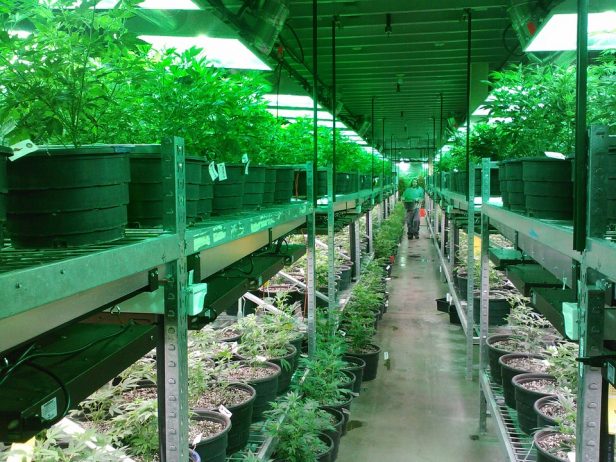NEW YORK CITY – There is a lot of information available surrounding the cannabis industry, but for insurers, understanding the risks involved with these businesses, the types of insurance required and new products that may be needed is critical.
Claims magazine and GlobeSt.com is hosting a webinar today looking at the insurance and real estate implications for marijuana-touching businesses, "Legalized Cannabis is Big Business," on Thursday, Oct. 24 at 2 p.m. ET. The gradual legalization of medical and recreational marijuana by individual states means that regulations differ from state to state, complicating the efforts of businesses operating in multiple states.
This webinar will take an in-depth look at the types of coverage required by these various entities, their unique risks and the opportunities they present for insurers looking to expand their coverage products.
Sharing their expertise will be Kieran O'Rourke, vice president and director of underwriting for Cannasure Insurance Services, and Steven Sherman, J.D., vice president of the cannabis risk group at PSA Insurance and Financial Services, and Stanley Jutkowitz, senior counsel at Seyfarth Shaw and head of the firm's cannabis practice.
Examining the real estate and risks
Before accounting for any cannabis entity occupying a facility or real estate, the area density and company type must be considered.
Whether an operation is a growth facility or produces topical and value-add products, it is crucial to meet the specific build-out requirements for asset size and municipal operation, since failure to meet them could result in property seizure if the owner falls short, according to Jutkowitz.
Those same guidelines apply to capital allocators of a property who want to protect their investment and see a return from the cannabis occupier. These capital allocators are not your traditional banks who view marijuana as a risky investment because of heavy federal regulation. They include private equity funds and hard-money lenders, each with their own rulebooks, Jutkowitz said. "It's just increasingly difficult to own cannabis commercial real estate unless you can purchase the real estate free and clear," he said.
Many of the risks these marijuana-related businesses face are similar to those experienced by other commercial entities. "While certain exposures are unique to the plant-touching policyholder, perils like fire, slip and falls, and products are the same as any other commercial business that has operations, branded products, buildings and things criminals want to steal," shares O'Rourke.
When it comes to underwriting specific aspects of a business, it is important to look at the growers, manufacturers and dispensaries as individual entities. For growers, Cannasure focuses primarily on the indoor/greenhouse cultivator. "To begin with, we require the greenhouse to be a real building and not a hoop house or some type of seasonal structure that will not stand up to the elements," says O'Rourke. "Other factors include the use of automation and science to make sure water, fertilizers and other chemicals are applied in a precise manner. Growth medium choices are also noted."
Other factors the company considers include the lights, which need to be installed to code and properly calibrated so the plants receive the correct amount of heat and light to promote growth. "Ventilation should be handled by sophisticated systems with air quality monitoring capabilities," adds O'Rourke. "Personnel needs to have expertise in horticulture with a concentration on cannabis cultivation. And all regulatory mandates need to be met or exceeded with regard to product testing."
When it comes to valuation, the maturity of the plants comes into play for any claims. "Valuation clauses use the wholesale price at the time of the loss," explains O'Rourke. "Adjustments are made depending on the growth stage the plants are in at the time of loss, i.e., seedlings, vegetative or flowering stage."
The cost of purchasing a single plant can range from $40 to several hundred dollars for seeds, depending on the type. Clones are cuttings from live plants and can range from $5-10 to several hundred dollars, again depending on where they are purchased and the type of plant involved. Some single plants can start at $250 to $300 each and buying multiple plants can cost around $400. Planters, nutrients, lighting and watering systems, fans and humidity monitors can add to the growing costs. Plants increase in value as they mature, which is why the "stage" a plant was in during a loss really affects the size of the claim.
The good news for insurers operating in this space is that most states have stringent regulations in place when it comes to physical security for growing and manufacturing operations. This also helps to maintain product quality.
"In most cases, cannabis facilities are well maintained and secured," details Sherman. "States normally require seed-to-sale tracking systems, which track a plant from the time it is a seedling until it is sold at the dispensary, meaning that it is relatively easy to stop a product from getting to market. Further, most states have rigid testing requirements to eliminate any issues. Given the recent injuries and deaths primarily due to black-market purchases, insurers can expect testing requirements to be strengthened even further, thus reducing future liability."
Also contributing to the strict security required for these operations is the fact a lot of cannabis business transactions are paid in cash because of a lack of access to banks since marijuana is illegal at the federal level. This leaves cannabis-touching companies with a bevy of cash on hand. Many of these companies need a bank-like build-out for their security, Jutkowitz said.
There are other risks that must be considered when providing coverage to manufacturers, especially those manufacturing products for human consumption. "Among many other risk details, we need to examine raw material sourcing, formulation and ingredient lists, baking/cooking/processing facilities, dosage consistency, adherence to good manufacturing practices, product labeling and sales distribution channels and vendor qualifications," qualifies O'Rourke.
…
Much like any other sector, the cannabis industry will continue to evolve, especially as bills for federal legalization stack in Congress. With better insight into how the facilities function and distribute cannabis, more education on economic risk will become available. "As this unfolds, people will become more familiar, or comfortable, with the industry and will be being willing to invest," Jutkowitz said.
Recommended For You
Insurers and real estate professionals who want to know more about the businesses involved in growing, manufacturing, housing and selling marijuana and its various products should register for "Cannabis is Big Business" TODAY at October 24 at 2 p.m. ET
Patricia L. Harman ([email protected]) is editor in chief of Claims Magazine. Mariah Brown ([email protected]) is a reporter with GlobeSt.com, a publication under the ALM Real Estate Media Group.
© Touchpoint Markets, All Rights Reserved. Request academic re-use from www.copyright.com. All other uses, submit a request to [email protected]. For more inforrmation visit Asset & Logo Licensing.








